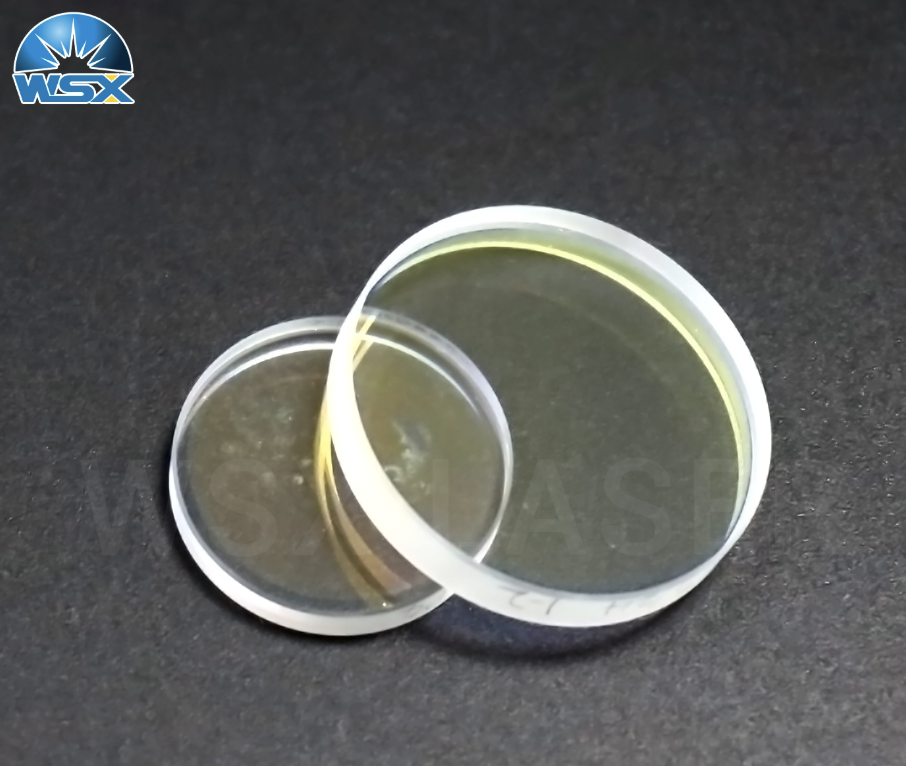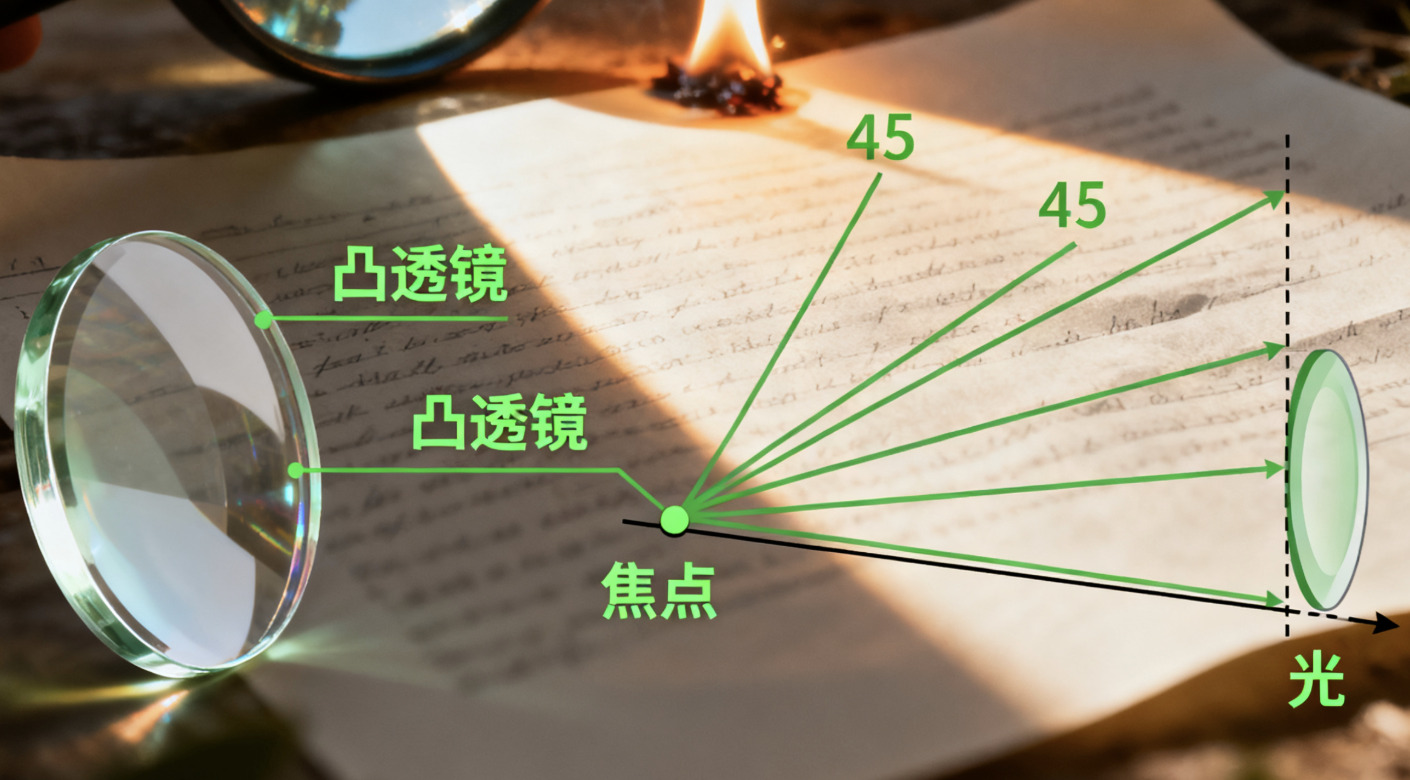Light doesn’t just travel—it bends. When it passes through glass, water, or transparent plastic, it changes direction. That bending is called refraction, and it’s what makes lenses work. A lens uses refraction to focus or spread light. This simple principle powers everything from eyeglasses and microscopes to cameras and telescopes.
Without lenses, we couldn’t see stars clearly, photograph the world, or even correct our eyesight. So what kinds of lenses exist in optics, and how do they differ? Let’s look closely—literally and figuratively—at the fascinating world of lenses.
What Is an Optical Lens?
An optical lens is a transparent object—made from glass or plastic—that bends light rays to form images. Depending on its shape and curvature, a lens can bring light rays together (converging) or spread them apart (diverging).
Imagine sunlight passing through a magnifying glass and focusing to a bright point.
That’s a convex lens in action. Now think of a door peephole making your face look tiny—that’s a concave lens doing the opposite.
Main Structural Features of a Lens
| Feature | Description | Function |
| Optical Axis | Central line passing symmetrically through the lens | Acts as the reference for light paths |
| Principal Focus (Focal Point) | The point where light rays meet or appear to meet | Determines how the lens focuses |
| Focal Length (f) | Distance between the center and the focal point | Affects magnification and image clarity |
| Center Thickness | The thickest part of the lens | Key for determining whether it’s concave or convex |
| Curvature | How rounded or flat each surface is | Controls how strongly light bends |
A short focal length means stronger bending and higher magnification. A long focal length gives a gentler bend and a wider view—perfect for cameras and telescopes.

How Are Lenses Classified?
In optics, lenses are generally divided into two main categories based on their structure and complexity:
1. Simple lenses – crafted from a single piece of transparent material such as glass or plastic.
These are the most basic type and are often used in magnifying glasses, reading glasses, and simple optical instruments.
2. Compound lenses – built by combining two or more simple lenses.
The goal is to correct optical aberrations (like distortion or color fringing) and enhance image quality.
Compound lenses are found in cameras, microscopes, and telescopes where clarity and precision are essential.
Each lens type bends and directs light differently, depending on its shape, curvature, and refractive index.
This unique behavior allows lenses to focus, magnify, or spread light to achieve a desired optical effect.
Before diving into special materials and coatings, it’s important to understand the basic lens shapes — the foundation of all optical design.
Convex Lenses (Converging Lenses)
A convex lens bulges outward—thicker in the middle, thinner at the edges. When parallel rays of light enter, they bend inward and meet at a focal point on the opposite side. That’s why it’s called a converging lens.
Shapes of Convex Lenses
| Type | Description |
| Biconvex (Double Convex) | Both sides curve outward; common in magnifying glasses |
| Plano-Convex | One side flat, one curved; used in lasers and optics experiments |
| Concavo-Convex (Positive Meniscus) | Curves inward slightly on one side; reduces distortion |
Where Convex Lenses Are Used
Eyeglasses for farsightedness (hyperopia)
Magnifying glasses and hand lenses
Cameras and projectors for image focusing
Microscopes and telescopes
Optical sensors and barcode scanners
Convex lenses concentrate light to a point, making images brighter and larger. That’s why your smartphone camera can capture crisp, detailed shots even with small optics.

Concave Lenses (Diverging Lenses)
A concave lens curves inward—thinner at the center and thicker at the edges. When parallel rays of light enter, they spread outward, appearing to come from a virtual focal point behind the lens. That’s why concave lenses are also known as diverging lenses.
Shapes of Concave Lenses
| Type | Description |
| Biconcave (Double Concave) | Both sides curve inward; spreads light widely |
| Plano-Concave | One side flat, one inward curve; used in beam expanders |
| Convexo-Concave (Negative Meniscus) | Curves outward slightly; minimizes spherical aberration |
Where Concave Lenses Are Used
Eyeglasses for nearsightedness (myopia)
Door peepholes and security lenses
Laser beam expanders and optical instruments
Flashlights to spread light beams evenly
Concave lenses are essential in optical designs that require wide, evenly distributed light.
Specialized and Advanced Lenses
Not all lenses are simple convex or concave. Modern optics uses special designs to reduce distortion, enhance focus, or fit compact devices.
1. Cylindrical Lenses
Curved in only one direction.
Focus light into a line, not a point.
Used in barcode readers, optical astigmatism correction, and laser shaping systems.
2. Aspheric Lenses
The curvature changes gradually from center to edge.
Thinner and lighter than standard spherical lenses.
Reduce image distortions and reflections.
Found in high-index eyeglasses, cameras, and projectors.
3. Achromatic & Apochromatic Lenses
Light of different colors bends by different amounts—causing color fringing at image edges. Achromatic lenses fix this by combining materials with different refractive indices.
| Lens Type | Purpose | Used In |
| Achromatic Doublet | Combines two materials (e.g., crown + flint glass) to correct color | Telescopes, microscopes |
| Apochromatic Lens | Uses 3+ elements for precise color correction | High-end cameras, research optics |
4. Fresnel Lenses
Made of thin concentric rings—each ring acts like a small prism.
Very lightweight, ideal for large-scale focusing.
Used in lighthouses, solar concentrators, stage lighting, and VR headsets.
5. Gradient Index (GRIN) Lenses
Refractive index changes gradually inside the material.
Bends light smoothly without curved surfaces.
Common in endoscopes, fiber optics, and miniaturized cameras.

Simple vs. Compound Lenses
A simple lens has one optical element; a compound lens combines several to improve image quality.
| Property | Simple Lens | Compound Lens |
| Structure | One piece of glass or plastic | Multiple lenses combined |
| Aberration Control | Limited | Excellent |
| Clarity | Good for basic use | High precision |
| Cost | Lower | Higher |
| Example | Magnifying glass | Camera lens system |
Compound lenses can correct flaws like spherical, chromatic, and coma aberrations, giving a sharper, color-true image.
Lens Materials: Glass vs. Plastic
The material of a lens affects its weight, durability, and optical clarity.
| Material | Refractive Index | Weight | Impact Resistance | Best Use |
| Crown Glass | 1.52 | Heavy | Low | Optical instruments |
| CR-39 Plastic | 1.50 | Light | Moderate | Everyday glasses |
| Polycarbonate | 1.59 | Very light | High | Sports & children’s eyewear |
| Trivex | 1.53 | Very light | Very high | Safety eyewear |
| High-Index Plastic (1.67–1.74) | Thin | Light | High | Strong prescriptions |
Plastic lenses dominate today’s market—they’re safer, lighter, and less likely to shatter.
Glass remains unmatched in optical precision but is heavier and breakable.
High-Index and Aspheric Lenses
When you need stronger prescriptions, high-index lenses shine. They bend light more efficiently, so you get thinner, lighter, and clearer lenses.
Standard plastic index: 1.50
High-index range: 1.60 – 1.74
Up to 50% thinner than normal lenses
The aspheric design further reduces bulging, flattens the profile, and improves side vision.Together, they make thick lenses from the past nearly obsolete.
Choosing the Right Lens for You
Selecting the right lens isn’t just about correcting vision — it’s about matching your daily habits, environment, and comfort. Modern lenses come in a wide range of materials and designs, so understanding what matters most to you helps narrow the options.
Here are the key factors to keep in mind:
1. Vision needs:
Determine whether you need correction for nearsightedness, farsightedness, astigmatism, or presbyopia.
Single-vision lenses suit one focal range, while bifocal, trifocal, or progressive lenses cover multiple distances seamlessly.
2. Material:
Choose between glass, plastic, polycarbonate, or high-index lenses.
Glass offers sharp clarity but is heavier and more fragile.
Plastic and polycarbonate lenses are lighter, safer, and better for everyday or active wear.
3. Lifestyle:
Think about where and how you spend most of your time.
Athletes or children benefit from impact-resistant polycarbonate, office workers may prefer blue-light filtering computer lenses, and frequent travelers often choose photochromic lenses that adapt to light conditions.
4. Frame compatibility:
Some frames require specific lens thickness or curvature.
High-index lenses fit well in thin, lightweight frames, maintaining both comfort and style.
5. Coatings and treatments:
Add-ons can make a big difference. Anti-reflective coatings reduce glare and halos, UV protection shields your eyes from harmful rays, and scratch-resistant layers extend lens life.
In the end, it’s always best to talk to your optometrist. They’ll assess your prescription, lifestyle, and frame choice to recommend the perfect lens-material-coating combination for clear, comfortable, and long-lasting vision.
Frequently Asked Questions
1. What is the difference between a convex and concave lens?
A convex lens converges light rays to a focal point and is thicker at the center, while a concave lens diverges light rays and is thinner at the center.
2. What are the main types of optical lenses?
The main types include convex (converging), concave (diverging), cylindrical, aspheric, achromatic/apochromatic, Fresnel, and gradient index (GRIN) lenses.
3. What are simple and compound lenses?
Simple lenses consist of a single optical element, while compound lenses combine two or more lenses to correct distortions and enhance image quality.
4. Why are high-index lenses thinner than regular plastic lenses?
High-index lenses bend light more efficiently due to a higher refractive index, allowing them to be thinner and lighter while maintaining the same prescription.
5. What is an aspheric lens?
An aspheric lens has a curvature that changes gradually from center to edge, reducing distortions and flattening the lens profile for better peripheral vision.
Conclusion
Lenses are more than just pieces of glass or plastic—they shape how we see and interact with the world. From simple convex and concave lenses to advanced aspheric, high-index, and Fresnel designs, every lens type serves a purpose, whether it’s correcting vision, enhancing cameras, or powering optical instruments. Choosing the right lens depends on your prescription, lifestyle, and desired optical performance.
For high-quality lenses, coatings, and custom optical solutions, Shenzhen Worthing Technology Co., Ltd. offers a wide range of products designed to meet both everyday and professional optical needs. Their expertise ensures that you get lenses that are durable, clear, and perfectly suited to your vision requirements. With the right lens from Worthing Technology, you can experience comfort, clarity, and precision in every glance.




















